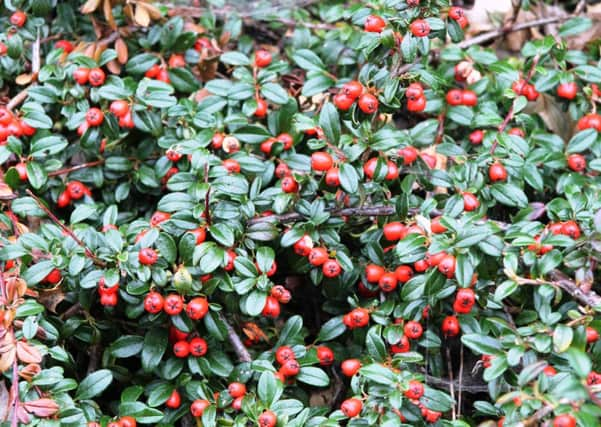Fire in the darkness


Pyracantha and Cotoneaster are not only bright and beautiful; they are useful too, providing an excellent source of food and shelter for wildlife.
The magnificent fiery orange and ruby red berries are set on a backdrop of dark, evergreen, glossy foliage that can brighten up the gloomiest November day or sparkle in the winter sunshine.
Advertisement
Hide AdAdvertisement
Hide AdThe plants at first glance look similar and, in fact, are distantly related. Pyracantha is commonly known as Firethorn, and if you’ve ever been pricked by one of its thorns you’d know why. Because of its thorny nature it’s recommended as an intruder deterrent for those unwanted animal (or human) visitors to your garden. Plant them close together and within a couple of years they will be almost completely impenetrable.
Cotoneaster is the gentler sister of Pyracantha – it’s thornless and, therefore, sometimes chosen by those who want the beauty without the bite.
Both plants can be grown as hedges, groundcover or against walls and fences; they look equally good as freestanding shrubs. They are easy to grow in sun or partial shade and in any reasonable soil. They have the added benefit of being covered by lots of bee-attracting small but beautiful white flowers in May. The only slight downside is that some varieties have a pungent smell.
Pyracantha ‘Navajo’ and Pyracantha ‘Orange Charmer’ are excellent choices. ‘Orange Charmer’ is an evergreen, bushy, arching shrub with white flowers from April and orange fruits in autumn.
Advertisement
Hide AdAdvertisement
Hide Ad‘Navajo’ sports vibrant orange red berries nestled against shiny green leaves and can be resistant to fireblight, while Cotoneaster horizontalis has superb colour late in the year with deep red berries and glossy green foliage.
The herringbone patterned stems develop into a decorative weave across the ground or on a wall, according to how it is trained. It works well in the shade but the delicate pink flowers and jewel-like red berries really thrive in full sun.
One potential drawback is the plant’s ability to throw out lengthy underground roots which can suddenly break the surface yards away to produce an unwanted and hard-to-get-rid-of clone.